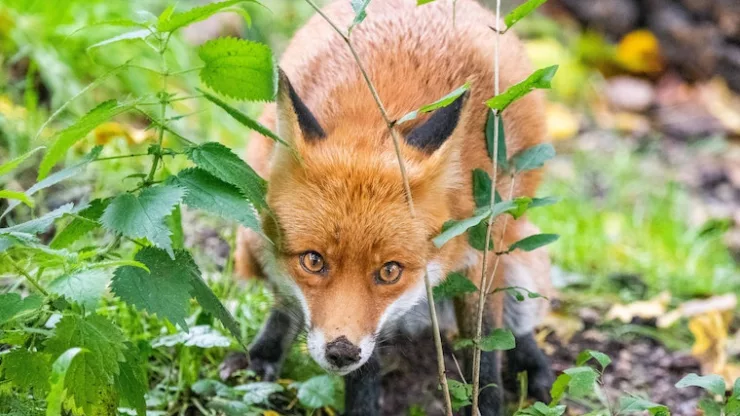As urbanization continues to transform our cities, the presence of wildlife may seem like a distant memory.
However, songbirds have found a way to thrive in these concrete jungles, providing a symphony of melodies that add to the charm of city life.
In this article, we explore the beauty of urban songbirds, the threats they face, and the efforts to protect them.
Jump to Section
Introduction
The Rise of Urban Songbirds
As cities expand, so does the habitat for urban songbirds.
These birds have adapted to the urban environment and have found new niches to call home.
They have learned to nest in buildings, forage in parks, and coexist with humans.
This adaptation has allowed them to flourish, and as a result, urban songbirds are becoming more common in cities around the world.
The Importance of Celebrating City Life
Urban songbirds are not only a delight to listen to, but they also play an important role in the ecosystem.
They help control insect populations and pollinate plants. Additionally, they provide a connection to nature for city dwellers who may not have the opportunity to experience wildlife in other ways.
The Beauty of Urban Songbirds
The Different Types of Urban Songbirds
There are many types of songbirds that call cities home, including sparrows, finches, warblers, and thrushes.
Each species has its unique characteristics and melodies, making it a joy to listen to them.
Their Unique Melodies and Characteristics
Songbirds are known for their beautiful and complex songs. Each species has its unique melody, and some birds can even mimic other sounds they hear in their environment.
They also have vibrant plumage, making them a sight to behold.
The Benefits of Their Presence in Cities
The presence of urban songbirds provides many benefits to the city ecosystem. They help control insect populations, which can help reduce the spread of diseases.
They also help pollinate plants, which is essential for maintaining healthy green spaces in cities.
Threats to Urban Songbirds
Urbanization and Habitat Loss
Urbanization and habitat loss are the most significant threats to urban songbirds. As cities expand, natural habitats are destroyed, leaving songbirds with limited nesting and foraging opportunities.
Pollution and Climate Change
Pollution and climate change also pose a threat to urban songbirds. Air pollution can cause respiratory problems, and climate change can alter migration patterns and nesting habits.
The Impact of Cats and Other Predators
Cats and other predators are also a significant threat to urban songbirds.
Domestic cats are responsible for killing millions of birds each year, and other predators such as rats and hawks can also pose a threat.
Efforts to Protect Urban Songbirds
Conservation Programs and Initiatives
Conservation programs and initiatives are essential in protecting urban songbirds.
These programs aim to restore natural habitats, create green spaces, and reduce the impact of predators.
Community-Based Actions and Advocacy
Community-based actions and advocacy are also crucial in protecting urban songbirds.
These actions can include educating the public about the importance of songbirds, creating bird-friendly gardens, and supporting conservation efforts.
The Role of Technology and Innovation
Technology and innovation also play a role in protecting urban songbirds. Bird-friendly building designs, such as bird-safe glass, can reduce the number of collisions.
Additionally, tracking devices can help researchers monitor migration patterns and nesting habits.
Celebrating Urban Songbirds
The Significance of Urban Songbirds in Our Lives
Urban songbirds bring joy and beauty to our cities, and their presence is a reminder of the importance of maintaining a connection with nature.
Celebrating urban songbirds can help raise awareness of the threats they face and the need to protect them.
The Need for Collective Efforts to Ensure Their Survival
Protecting urban songbirds requires collective efforts from individuals, communities, and governments.
Through conservation programs, community-based actions, and technological innovation, we can ensure that these beautiful birds continue to thrive in our cities.
FAQ
What can I do to help protect urban songbirds?
You can help protect urban songbirds by creating bird-friendly gardens, reducing the use of pesticides, supporting conservation programs, and keeping cats indoors.
How can I attract songbirds to my garden?
You can attract songbirds to your garden by providing food, water, and shelter.
Planting native plants and creating a diverse habitat can also help attract a variety of species.
What should I do if I find an injured or sick urban songbird?
If you find an injured or sick urban songbird, you can contact your local wildlife rehabilitation center for assistance.
It is essential to handle the bird with care to avoid causing further harm.
Urban songbirds are a valuable part of our cities, and their unique melodies add to the charm of city life.
While they face many threats, collective efforts can ensure their survival and continue to celebrate their beauty.
I’m a nature enthusiast and creator of Metro Wilds and have spent years exploring the great outdoors.
With a passion for environmental conservation and sustainability, I have dedicated my career to writing about the beauty and wonders of nature, as well as the threats facing our planet.
Contact me at [email protected] for assistance.





